ABOUT GOAT REARING
Back
Goat Farming
India occupies first position in terms of goat population and milk production. Chevon (goat meat) is most preferred and widely consumed meat in the country. Since ancient times goat milk has traditionally been known for its medicinal properties and has recently gained importance in human health due to its proximity to human milk for easy digestibility and it’s all round health promoting traits. Still research is needed to explore and validate medicinal properties of goat milk for projecting it as therapeutic milk for human health. Demand for goat milk and milk products for internal consumption and export is expected to rise in coming years. Goat husbandry provides glimpses of future hope for employment generation, nutritional security and prosperity to the millions of small and marginal farmers in the country.
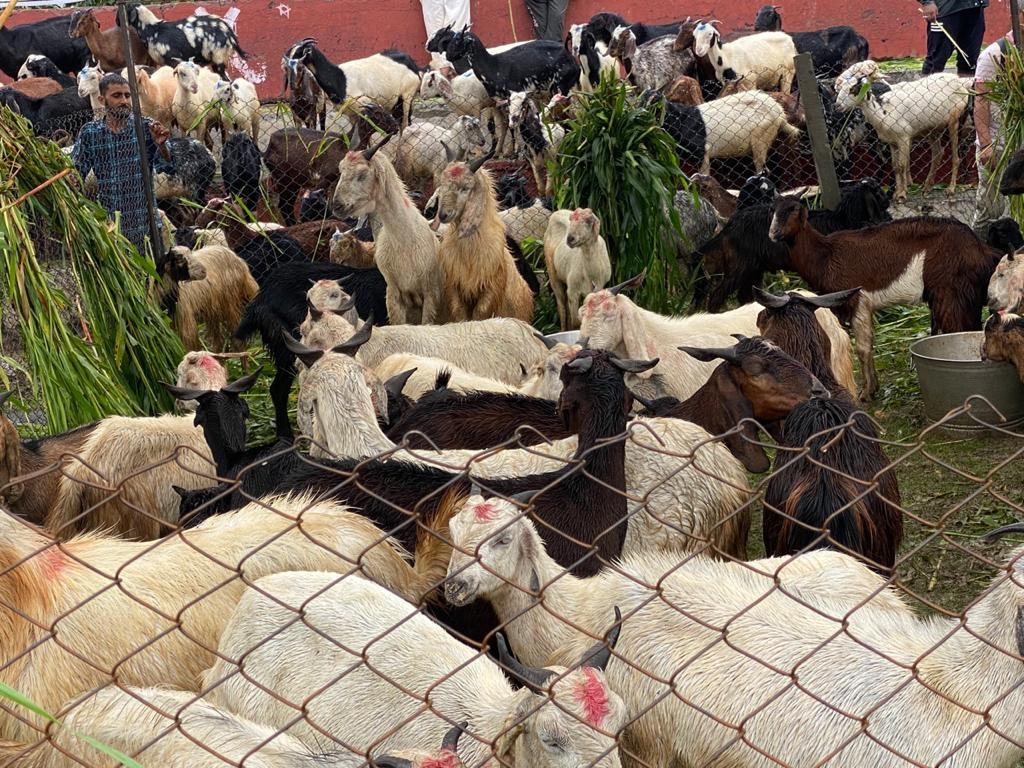 Basic Information of Goat as a livestock in the Country
1. Role in Rural Economy:
Basic Information of Goat as a livestock in the Country
1. Role in Rural Economy:
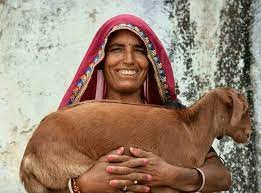

Among all species of farm animals, Goats have the widest ecological range and have been poor people’s most reliable livelihood resource since their domestication during Neolithic Revolution about 10 millennia ago. Goat plays a significant role in providing supplementary income and livelihood to millions of resource poor farmers and landless laborers of rural India. Small ruminant rearing ensures self-employment and acts as a cushion in distress situations like drought and famine
2. Role in entrepreneurship:
 In last few years, goat production in the country gained momentum in the form of a commercially viable enterprise as evidenced by increasing interest of young entrepreneurs to develop knowledge and skill in this species. In many small-herd dairy goat enterprises, not all does must be milked, so meat is often the main product. Along with meat, the sale of breeding stock from small herds of dairy goats may be an important income source. This versatility allows the producer to plan and operate a more stable economic production unit. In some parts of the world, all breeds may be raised for fiber, meat, and milk and cheese production. Kids of all breeds can be used for meat. However, meat goat carcasses are generally leaner and more muscular than dairy goat carcasses.
In last few years, goat production in the country gained momentum in the form of a commercially viable enterprise as evidenced by increasing interest of young entrepreneurs to develop knowledge and skill in this species. In many small-herd dairy goat enterprises, not all does must be milked, so meat is often the main product. Along with meat, the sale of breeding stock from small herds of dairy goats may be an important income source. This versatility allows the producer to plan and operate a more stable economic production unit. In some parts of the world, all breeds may be raised for fiber, meat, and milk and cheese production. Kids of all breeds can be used for meat. However, meat goat carcasses are generally leaner and more muscular than dairy goat carcasses.
3. Role in global scenario:
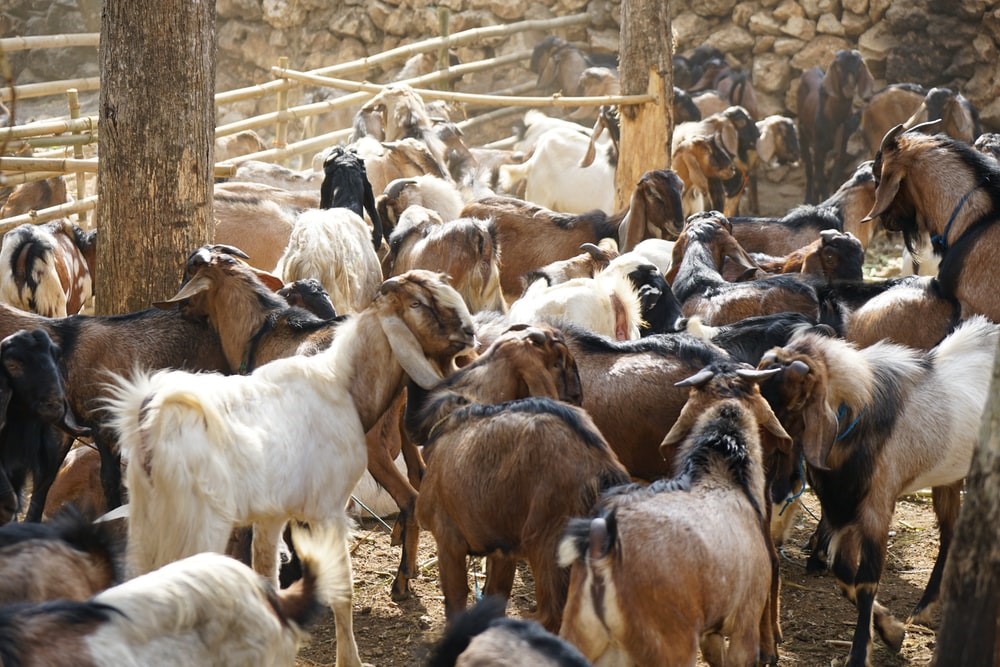 India ranks on top in goat population. The demand for meat, milk and fiber is increasing progressively and expected to further rise in future in view of sizable increase in per capita income and health consciousness of people. Worldwide consumers are preferring products that are “clean, green and ethical”. As such goat producers are shifting to husbandry practices that do not compromise the welfare of animals. Medicinal properties of goat milk increased the interest of society to use it as therapeutic health food nutraceutical; moreover, biotechnologists are focusing on designer milk for human health.
India ranks on top in goat population. The demand for meat, milk and fiber is increasing progressively and expected to further rise in future in view of sizable increase in per capita income and health consciousness of people. Worldwide consumers are preferring products that are “clean, green and ethical”. As such goat producers are shifting to husbandry practices that do not compromise the welfare of animals. Medicinal properties of goat milk increased the interest of society to use it as therapeutic health food nutraceutical; moreover, biotechnologists are focusing on designer milk for human health.
4. Current Scenario:
Traditionally goat has served as source of livelihood and financial security to large section of society, mainly comprising of resource‐poor people. In the present scenario of changing agro‐climatic conditions, this small ruminant farm animal has tremendous potential to be projected as the Future Animal for rural and urban prosperity. The backyard goat rearing is steadily turning as the fast growing livestock industry in the country. Goat husbandry in India is essentially an endeavor of millions of small holders who rear animals on “Crop Residues” and “Common Property Resources”. The small holders produce milk, meat, fiber, skin etc for the community with virtually no capital, resource and formal training. More often goats are reared for production of meat, but they also serve as ready source for milk to meet the family requirement.
5. Registered Breeds of Goat:
 Our country has 26 registered breeds of Goat. Out of these, the high genetic merit (more meat / milk yield per animal) indigenous registered breeds exist are only 12 breeds. The 12 breeds of high genetic merit Goat have a population of 4.55crore out of total population of 13.5 crore.
Goat Milk Production :
Milk and milk products are the essential food items of human beings which provide sufficient nutritional supplements especially to the children. The milk production in the country has increased from 146.3 million tonnes in 2014-15 to 155.5 in 2015- 16 registering a growth of 6.27%. Also, the per capita availability has sharply increased from 225 gm per day in 2003-04 to 337 gm per day in 2015-16.
6. Species Wise Milk Production:
The country stands first in goat milk production and is sharing 26.31% goat milk production in the world.{The total milk production in the country 155.5 million tones } The total Goat milk production 5377.59 thousand tones (3%) } growth of 6.27%.
The top 5 states in terms of the goat milk production estimate in India were: Rajasthan, Uttar Pradesh, Madhya Pradesh, Gujarat and Maharashtra during 2014-15.
The goats can be milked any time of the day and are therefore named as the moving refrigerators. Goat milk is prescribed for children, old and sick people as it is easily digestible and has possible medicinal value.
7. Status of Goat industry:
Our country has 26 registered breeds of Goat. Out of these, the high genetic merit (more meat / milk yield per animal) indigenous registered breeds exist are only 12 breeds. The 12 breeds of high genetic merit Goat have a population of 4.55crore out of total population of 13.5 crore.
Goat Milk Production :
Milk and milk products are the essential food items of human beings which provide sufficient nutritional supplements especially to the children. The milk production in the country has increased from 146.3 million tonnes in 2014-15 to 155.5 in 2015- 16 registering a growth of 6.27%. Also, the per capita availability has sharply increased from 225 gm per day in 2003-04 to 337 gm per day in 2015-16.
6. Species Wise Milk Production:
The country stands first in goat milk production and is sharing 26.31% goat milk production in the world.{The total milk production in the country 155.5 million tones } The total Goat milk production 5377.59 thousand tones (3%) } growth of 6.27%.
The top 5 states in terms of the goat milk production estimate in India were: Rajasthan, Uttar Pradesh, Madhya Pradesh, Gujarat and Maharashtra during 2014-15.
The goats can be milked any time of the day and are therefore named as the moving refrigerators. Goat milk is prescribed for children, old and sick people as it is easily digestible and has possible medicinal value.
7. Status of Goat industry:
 The goat industry in India has yet to be firmly laid down on scientific lines. Goat keepers are maintaining goats in all kinds of situations depending upon the ecology and their circumstances. The minimum goat unit could consist of one goat and the maximum could go to a few hundreds under range management. Goat farming in the country is mainly based on “zero input”. The fear of mortality has perhaps been largely responsible for not starting many large-scale goat farms. However, largescale goat farms have successfully running since over last 30 years at the CSWRI Avikanagar, MPKVV Rahuri, and at Leh.
8. Demand-Supply Gap Analysis:
The goat industry in India has yet to be firmly laid down on scientific lines. Goat keepers are maintaining goats in all kinds of situations depending upon the ecology and their circumstances. The minimum goat unit could consist of one goat and the maximum could go to a few hundreds under range management. Goat farming in the country is mainly based on “zero input”. The fear of mortality has perhaps been largely responsible for not starting many large-scale goat farms. However, largescale goat farms have successfully running since over last 30 years at the CSWRI Avikanagar, MPKVV Rahuri, and at Leh.
8. Demand-Supply Gap Analysis:
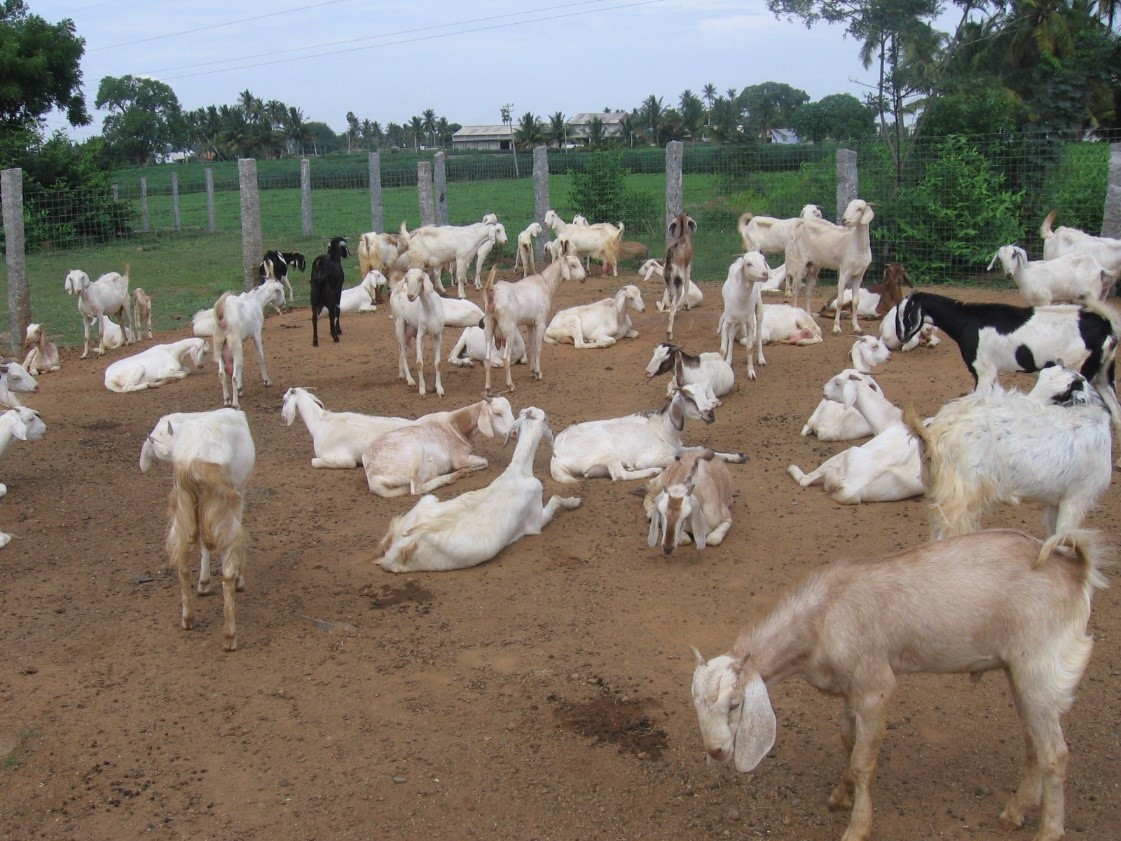 In India, considerable growth has been recorded in production of goat meat and milk during the last decade. The goat meat production has doubled (9.3% to 18.3%) and goat milk production has shown a growth rate of 31.53% during the last decade. The country stands first in goat milk production and is the second largest meat producer in the world sharing 26.31% goat milk and 10.41% goat meat production. Besides meat and milk, goats also produce good quality skin, valuable Pashmina fibre and manure. The goat sector contributes ` 14,453 crores to the agricultural economy of the country through meat (`6851 crores), milk (`4588 crores), skin (` 648 crores), etc. which accounts for around 8 per cent of the Gross Domestic Product (GDP) from livestock sector. In addition, the goat sector generates about 4% rural employment and about 20 million small and marginal farmers and landless labourers families depend on goats for their livelihood partially or completely. Even then we are not able to meet the increased domestic demand of the products and tap the potential of the sector in its full capacity by using the available opportunities.
* Goat meat has a number of health benefits and more nutritional value than other red meat. Low in calories, total fat, saturated fat and cholesterol than traditional meats, goat meat has higher levels of iron when compared to a similar serving size of beef, pork, lamb and chicken. Comparatively, goat meat also contains higher potassium content with lower sodium levels.
In India, considerable growth has been recorded in production of goat meat and milk during the last decade. The goat meat production has doubled (9.3% to 18.3%) and goat milk production has shown a growth rate of 31.53% during the last decade. The country stands first in goat milk production and is the second largest meat producer in the world sharing 26.31% goat milk and 10.41% goat meat production. Besides meat and milk, goats also produce good quality skin, valuable Pashmina fibre and manure. The goat sector contributes ` 14,453 crores to the agricultural economy of the country through meat (`6851 crores), milk (`4588 crores), skin (` 648 crores), etc. which accounts for around 8 per cent of the Gross Domestic Product (GDP) from livestock sector. In addition, the goat sector generates about 4% rural employment and about 20 million small and marginal farmers and landless labourers families depend on goats for their livelihood partially or completely. Even then we are not able to meet the increased domestic demand of the products and tap the potential of the sector in its full capacity by using the available opportunities.
* Goat meat has a number of health benefits and more nutritional value than other red meat. Low in calories, total fat, saturated fat and cholesterol than traditional meats, goat meat has higher levels of iron when compared to a similar serving size of beef, pork, lamb and chicken. Comparatively, goat meat also contains higher potassium content with lower sodium levels.
9. Doubling Farmers Income:
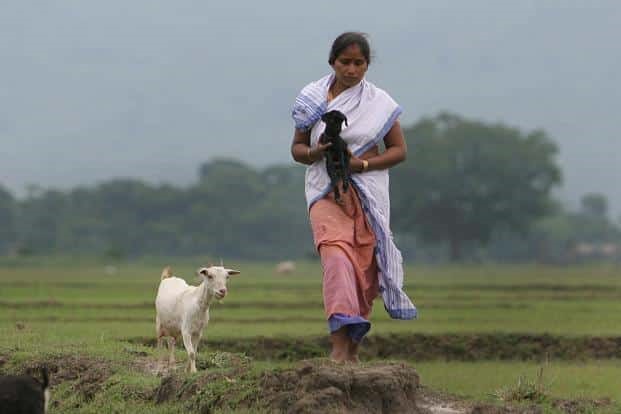
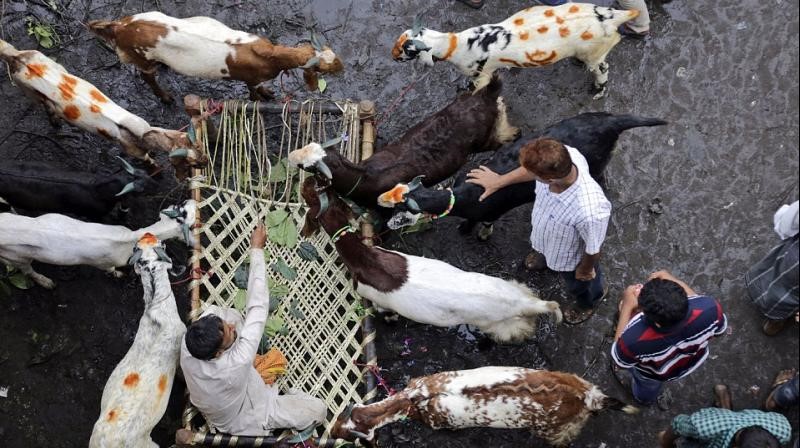
Past strategy for development of the agriculture sector in India has focused primarily on raising agricultural output and improving food security. The net result has been a 45 per cent increase in per person food production, which has made India not only food self-sufficient at aggregate level, but also a net food exporting country.
It is apparent that income earned by a farmer from agriculture is crucial to address agrarian distress (Chand 2016) and promote farmers welfare. In this background, the goal set to double farmers’ income by 2022-23 is central to promote farmers welfare, reduce agrarian distress and bring parity between income of farmers and those working in non-agricultural professions.
In the Goat farming sector, Doubling the income of farmers through different interventions which can make the sector more organised and strengthened would definitely increase the output or the income of the sector.
Key areas of Doubling the income of farmers are,
1. Improvement in productivity of animals.
resource use efficiency or saving in cost of production.
2. increase in production intensity.
3. Diversification towards high value products/ Value addition of Products.
10. SWOT Analysis of Goat Farming Sector
STRENGTHS
1. India is having the second highest number of Sheep & Goat. (After China).
2. Extraordinary hardiness and ability to adapt to the most harsh regions and facility of movement in rugged and harsher terrains.
3. Indigenous breeds with good potential.
4. Marketing potential for wool and meat.
5. Regulatory compliance.
6. Low production costs compared to other breeds and animal species.
WEAKNESS
1. Unorganised structure of sector.
2. Lack of marketing infrastructure facilities for Value addition such as meat processing, warehousing, Cold storage, refrigerated vehicles.
3. Absence of Public Private Partnership.
4. Lack of demand driven interventions.
5. Scarcity of good breeding stock.
6. Inadequate veterinary and extension services.
7. Lack of credit and access to markets.
OPPORTUNITIES
1. The growing demand of products.
2. Low start-up cost.
3. Integrated Systems Farming/ Mixed Species Farming.
4. Untapped potential for the export & value added products.
5. Paradigm shift in Government policies.
6. Modern production technologies.
THREATS
1. Extreme climatic conditions and natural calamities.
2. Invasion of diseases.
3. Depletion of natural resources (pastural land).
4. Urbanisation.
5. Tax regulations for marketing and other transactions.
11. Challenges of the Goat Rearing Sector

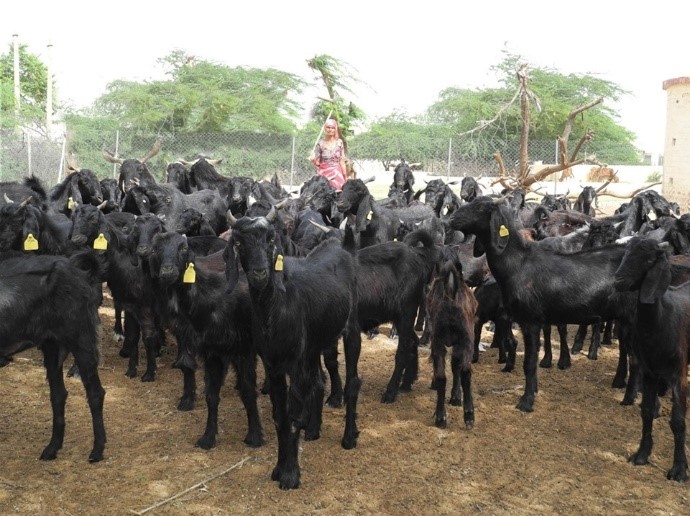
Types of Challenges The future well being of the Indian Goat industry depends on the potential for profitability, which is affected by various challenges and opportunities. Thre are three kinds of Challenges observed in the sector.
1. Technical Challenges
2. Commercial Challenges
3. Other Challenges
Technical Challenges
1. Unavailability of high Genetic Potential breeds of Goat.(Livestock breeds and breeding).
2. Absence of high productive exotic breed for Crossbreeding.
3. Lack of Scientific feeding practices.
4. Health challenges like PPR,CCPP etc.
5. High kid mortality.
6. Proper animal health services and Availability of drugs.
Commercial Challenges
1. Marketing facilities.
2. Unorganised nature of the sector.
3. Endemic disease problems, and trans-boundary disease risks.
4. Feed resources (Grassland based ruminant systems are largely dependent on pasture grazing) and Feed supply chains (compound feed mixing and milling).
5. Institutional support for entrepreneurship.
12. Strategies to address the Challenges
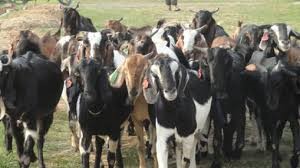
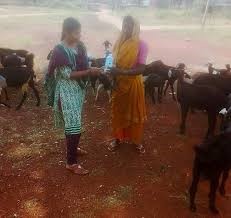
In order to attain the targets of National Action Plan, primary attention shall be given to the overall improvement of the sheep rearing sector which includes the following factors.
Breeding and Genetics
Nutrition
Health Improvement and Prevention of Diseases
Marketing
Other Farmer and Animal Welfare activities
13. Farmer and Animal welfare activities
The Goat development sector as a whole is unorganised. So, to organise the sector is the need of the hour.The following farmer oriented cum animal welfare activities can be considered for this purpose.
1) Scheme for Social Security for Goat Breeders ; Insurance schemes which will provide financial and social security to the farmer. The basic objective of the Goat Insurance Scheme is to provide insurance cover to animal in the case of accident including fire, lightning, storm, tempest, flood, inundation, earthquake, famine and diseases contracted or occurring during the period of the policy for project areas.
2) Developmental projects in the mode of Public Private Participation.
3) Common Facility Centre (CFC) for the rural Goat farmers.
4) Efforts to make sector organizations/ co-operatives, to strengthen the production side ie, Production of good quality animals for slaughter is must for production of good quality meat. Hence, farmers‟ cooperative can play a major role in the field of production and marketing of quality animals, extension education and encouragement of backward integration / contract farming as in poultry industry for intensive and semi-intensive system of rearing small ruminants.
14. Objectives of National Action Plan 2022

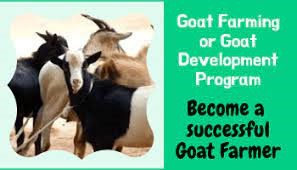
Based on the Opportunities and Resources and keeping in mind the challenges, a National Action Plan is hereby proposed.
The key objectives are:
1) To increase the production and productivity of Goat Farming sector.
2) To meet the increased consumption demand of Chevon and Goat Milk.
3) Organization of sector and Development of Agripreneurship and Doubling of Farmers income.
Key Strategies
To increase the production and productivity of Goat Farming sector,the following are the key strategies
o Genetic Improvement of Indigenous Goat through Open Nucleus breeding scheme.
o Strengthening of Government Goat Breeding farms.
o Open Nucleus Breeding Scheme for Conservation and Improvement(Formation of ONBS) A Nucleus Breeding Program is a centralized improvement program method, in which very superior animals are brought together from supply farms to form an elite nucleus flock. Farmers have to agree to put their superior animals together. The nucleus or base may remain open to the best animals from the supply flocks. This system is, therefore, called the Open Nucleus Breeding Scheme(ONBS). Once the nucleus is established, an efficient recording and selection program can be implemented. Farmers in an area using the same communal grazing area can be organized to undertake a breed improvement program together.
ONBS will have the following advantages:
Animals entering the nucleus are tested under farm conditions;
Selection is based on records for traits of economic value;
The improvements are quickly spread as farmers participating in the schemes receive their replacement sires from the nucleus;
A rapid generation turnover can be maintained;
Inbreeding is avoided;
Objectives are maintained for many years; and Small farmers benefit from coordinated effort, policy, pooled experience and shared facilities. Suggested Action plan The action plan for Goat breed improvement would firstly involve identification of the herd population of high genetic merit. The broad steps and the process to do this, would comprise:
An exhibition with prize money for does with good phenotype will be conducted. The number of does identified should be at least 3 times more than the number of bucks required to cover the earmarked breedable female population of the selected districts (zone). The name and address of the owner of the does shall be taken and recorded to facilitate the skilled recorder to record the traits of the male kids thus given birth by such does.
Simultaneously, the required number of bucks with good vigour and phenotype will be identified and purchased by Government for breeding with the identified does. The number of such bucks shall be at a ratio of 1 buck per 30 identified does.
Male kids born out of the identified does and having satisfactory growth rate and preferably out of twinning kids will be identified; records will be collected till 9 months of age at the farmer’s house itself. Recorded data shall be sent to Central Institute for Research on Goats (CIRG), Makhdum, to get the approval to purchase the bucks for breeding. Recording of traits will be done by entrusted persons @ Rs.5000/-per month.
Following recommendations from the CIRG, Makhdum, the selected high genetic merit bucks will be purchased @ Rs.30,000/- and distributed to progressive farmers in the ratio of Buck: Doe=1:30. An agreement that they cannot sell off the bucks till 5 year and they have to allow to breed the nearby females of the villager by taking Rs. 50/- per service for looking after the buck shall be made. Any additional amount over the above purchase price for the buck shall have to be borne by the States, if required.
Source:
https://www.pashudhanpraharee.com/national-action-plan-on-goat-for-aatm-nirbhar-bharat/
